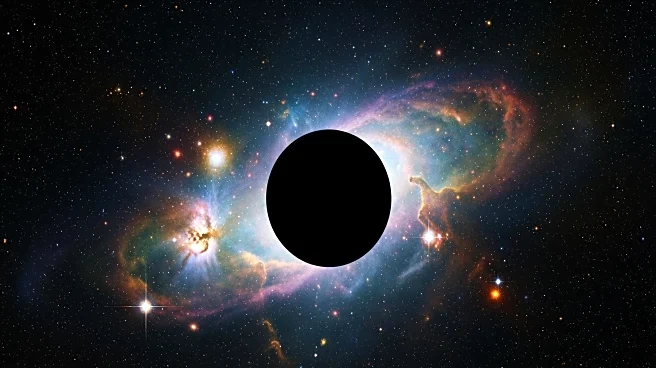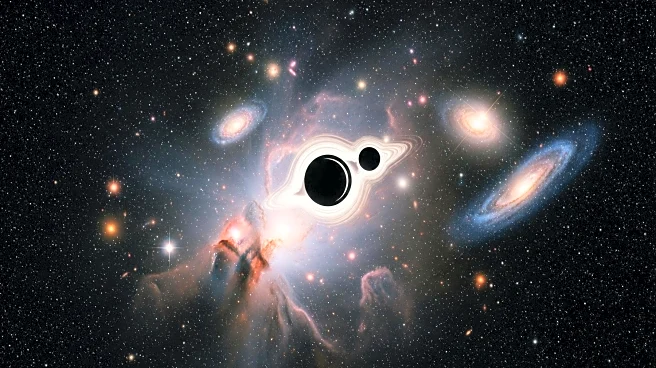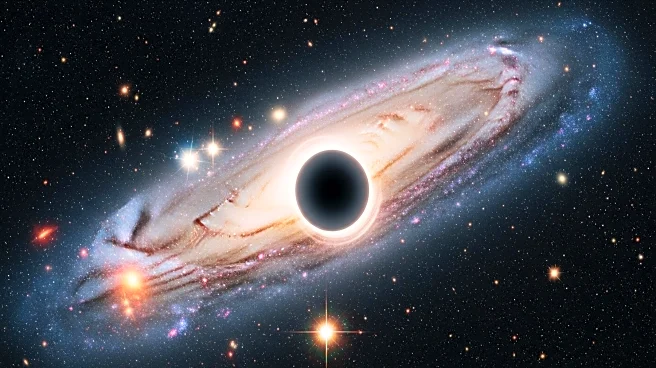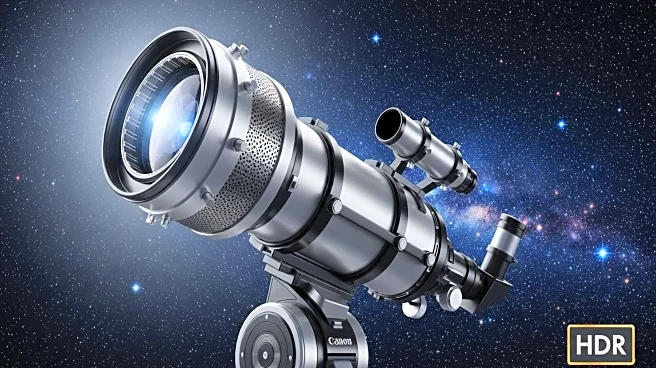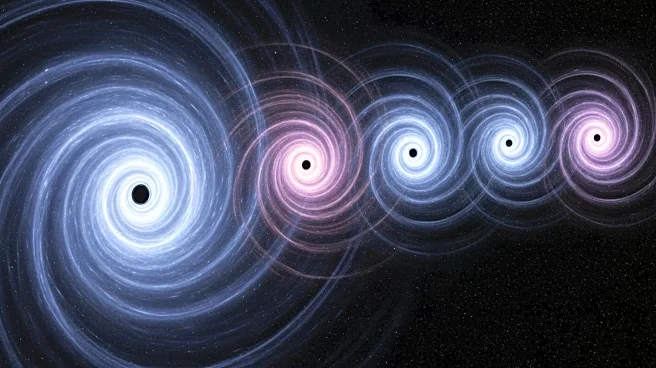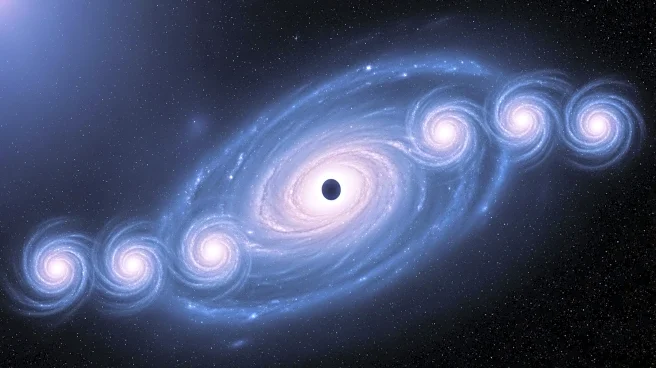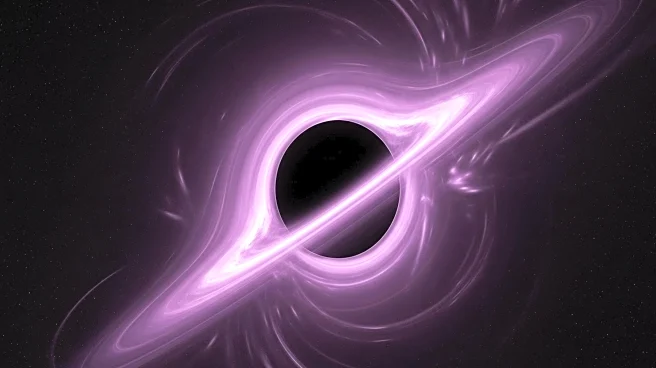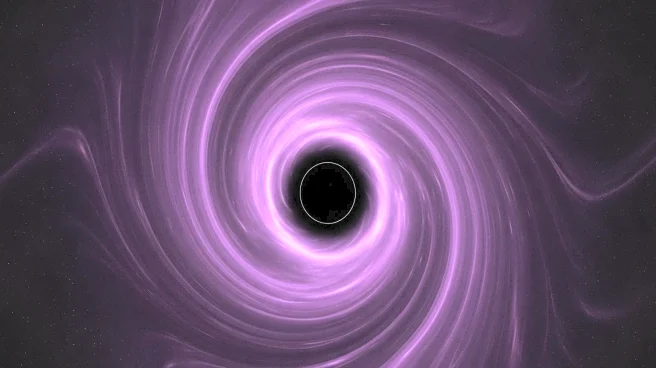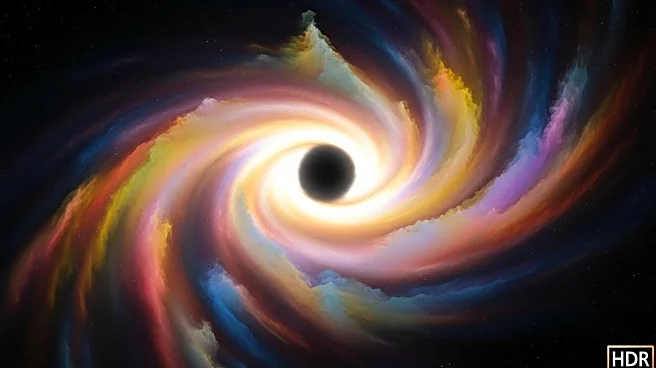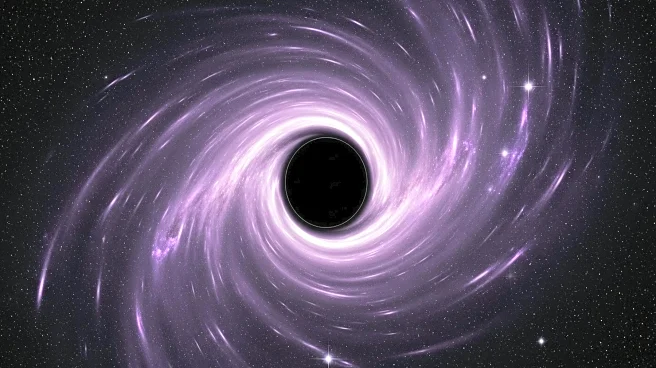What's Happening?
Astronomers have proposed a new model to explain mysterious objects known as 'little red dots' (LRDs) observed in the early Universe. These objects, including one nicknamed 'The Cliff,' may be supermassive black holes enveloped in dense clouds of gas, resembling an atmosphere around a stellar core. This model addresses the puzzling Balmer break observed in these objects, which suggests they are older than expected for their epoch, just 600 million years after the Big Bang. The Balmer break is a spectral feature caused by hydrogen atoms absorbing shorter-wavelength light, typically associated with galaxies dominated by A-type stars. However, the presence of such stars at this early stage in the Universe's history is unlikely, prompting researchers to explore alternative explanations. The proposed 'black hole star' model suggests these LRDs could be supermassive black holes surrounded by hydrogen gas, mimicking the appearance of a galaxy.
Why It's Important?
The significance of this discovery lies in its potential to reshape our understanding of the early Universe. If the 'black hole star' model is accurate, it could explain the presence of LRDs without challenging existing theories of cosmic evolution. This model offers a plausible explanation for the strong Balmer break observed in these objects, which has puzzled astronomers for years. Understanding these phenomena could provide insights into the formation and evolution of galaxies and black holes in the early Universe. Additionally, it highlights the importance of continued research and observation to refine our models and theories about the cosmos.
What's Next?
Further research is needed to validate the 'black hole star' model and explore its implications. Scientists will continue to study LRDs and similar objects using advanced telescopes and instruments, such as the James Webb Space Telescope, to gather more data and refine their models. This ongoing research may lead to new discoveries about the nature of these objects and their role in the Universe's history. As the model is still theoretical, additional observations and simulations are required to confirm its accuracy and understand the formation and evolution of these enigmatic objects.
Beyond the Headlines
The proposed model raises intriguing questions about the nature of black holes and their interaction with surrounding matter. It challenges traditional views of galaxy formation and suggests that black holes may play a more complex role in the Universe's evolution than previously thought. This research could lead to new insights into the behavior of black holes and their impact on cosmic structures. Additionally, it underscores the importance of interdisciplinary collaboration in astronomy, as researchers from various fields work together to solve complex cosmic puzzles.

